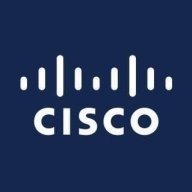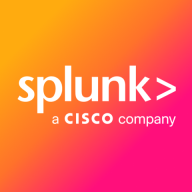

Splunk AppDynamics and Cisco UCS Manager compete in application and server management solutions. AppDynamics appears to have the upper hand in application performance monitoring with a detailed feature set, while Cisco UCS Manager is more comprehensive in server management.
Features: Splunk AppDynamics provides advanced transaction monitoring, detailed JVM insights, and easy integration across various environments, offering robust visibility for rapid bug detection. Meanwhile, Cisco UCS Manager excels in server management and configuration but lacks the in-depth application monitoring offered by AppDynamics.
Room for Improvement: AppDynamics could enhance its network monitoring capabilities, move away from Flash in the UI, and improve its alert system. Cisco UCS Manager might benefit from better integration capabilities and an easier user interface.
Ease of Deployment and Customer Service: Splunk AppDynamics supports flexible deployment across different cloud models and is known for responsive customer service. In contrast, Cisco UCS Manager primarily focuses on on-premises setups, needing improvements in deployment ease, despite effective customer service.
Pricing and ROI: Although AppDynamics is regarded as expensive with a complex licensing model, users often feel the investment is justified by substantial ROI in performance troubleshooting. Cisco UCS Manager is also considered pricey compared to other server management solutions, yet its comprehensive features provide significant value.
There's no need for an extra management device or virtual machine, as everything runs within the fabric interconnect.
Cisco UCS Manager provides cost savings by reducing the time support staff spend on long deployments.
For a severity one case, a call ensures immediate assistance and resolution of the matter.
With Intersight, service requests are automatically generated, enhancing the user experience and providing timely resolutions.
Regarding Cisco tech, they are pretty good.
AppDynamics is much more helpful.
The customer service and support are helpful and responsive.
Adding new chassis and extra blades is streamlined.
I would rate the scalability at nine out of ten, probably.
We have reached maximum capacity in our tier, and extending capacity has not been cost-effective from Splunk's perspective.
I did not find any Docker solution available with it, and a separate instance has to be installed.
If there's a really complex problem, I would probably give it a ten since it gets escalated quickly.
It is necessary to conduct appropriate testing before deploying them in production to prevent potential outages.
I can rate it nine out of ten.
We would benefit from advancements in AI that offer firmware recommendations automatically, reducing the need for human intervention and vendor communication.
It doesn't work straight out of the UCS, so someone who knows what they're doing is needed immediately, and it can be quite confusing.
While it has been improved from using Java to HTML, simplifying the tabs would enhance user experience.
Splunk AppDynamics does not support the complete MELT framework, which includes metrics, events, logging, and tracing for the entire stack.
If AppDynamics could develop a means to monitor without an agent, it could significantly improve application performance and reduce potential problems.
A good integration with Splunk would be very interesting, as Splunk is a good product for logs, and that part is currently missing in Splunk AppDynamics.
Recently, we acquired an excellent bundle with significant discounts, with offers like buying three servers and getting one free, along with UCSC and fabric included for free.
As long as they can afford it, there is a setup cost involved.
Customers have to pay a premium price, however, they receive considerable value from the product.
All these solutions at the moment are cheap, but it is like paying for insurance; you pay insurance to avoid major damage.
It supports ease of deployment, allowing for quick mass deployments in the data center, saving time and resources by doing so from a remote location.
Whenever there's a failure of any component, it's very easy to swap because you just disassociate that profile, remove the faulty blade, connect the new blade, and associate that profile, maintaining the same MAC address and worldwide port name.
One of the valuable features is the user interface base, specifically the C user interface.
The feature that I appreciate in AppDynamics Browser Real-User Monitoring is the intuitive and user-friendly dynamic mapping it creates for workflows.
What I like the most about Splunk AppDynamics is the end-to-end observability for the application, along with traces.
The baseline of all metrics in the Splunk AppDynamics database is very interesting. It can send alarms or alerts when the database baseline is not correct.


Splunk AppDynamics enhances application performance monitoring with advanced diagnostics and real-time insights, offering seamless end-to-end transaction tracking and infrastructure visibility.
AppDynamics provides critical tools for businesses to analyze application behavior and performance. Through innovative features like transaction snapshot analysis and adaptable dashboards, users can quickly identify and address issues, ensuring high levels of system uptime and efficiency. It is designed to support complex environments including Kubernetes and AWS, enhancing user experience by detecting performance issues early. Despite needing improvements in network monitoring and integration, it remains a robust option for tracking application health.
What are the key features of AppDynamics?In industries like financial services and e-commerce, AppDynamics facilitates performance tracking across distributed systems, optimizing infrastructure to meet consumer demands. It excels in environments needing precise transaction monitoring and is pivotal in delivering high value and satisfaction.
We monitor all IT Infrastructure Monitoring reviews to prevent fraudulent reviews and keep review quality high. We do not post reviews by company employees or direct competitors. We validate each review for authenticity via cross-reference with LinkedIn, and personal follow-up with the reviewer when necessary.